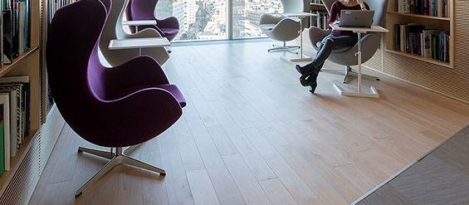August 4, 2016
Employers doing little to alleviate employees’ job fears over Brexit 0
A majority of employers won’t delay hiring for roles (54 percent) due to Brexit, yet nearly half (48 percent) of jobseekers are concerned about finding a job post the Referendum, new research claims. The survey of both employers and candidates conducted by totaljobs following the EU Referendum, reveals that 44 percent of all candidates believe there will be more competition for jobs following the Brexit vote, while 28 percent say that Brexit has already had an impact on their job search. Nearly a fifth (19 percent) have become less selective about the jobs they apply for, compared with 16 percent who are now more selective. Of those currently employed, 34 percent are worried about their job security as a result of Brexit, whilst half (52 percent) are not concerned. Unfortunately, many employers have not yet taken steps to ease employees’ concerns, as almost three-quarters (72 percent) of employees say they have not been spoken to by their employer about the impact of Brexit.










 1 The next big thing in office design is not what you think but is certainly a sign of the times, according to a story in Inc; it is
1 The next big thing in office design is not what you think but is certainly a sign of the times, according to a story in Inc; it is 



 The changing energy demands of British cities are revealed in
The changing energy demands of British cities are revealed in 
 The legal status of people working in the gig economy must be clarified so that businesses and individuals can thrive, according to a new report from the Recruitment & Employment Confederation (REC).
The legal status of people working in the gig economy must be clarified so that businesses and individuals can thrive, according to a new report from the Recruitment & Employment Confederation (REC). 

 There is a lurid headline in today’s Telegraph proclaiming that ‘Working in an office is as bad as smoking’. It’s been picked up by a number of other news outlets, has been splashed all over search engines and will no doubt join
There is a lurid headline in today’s Telegraph proclaiming that ‘Working in an office is as bad as smoking’. It’s been picked up by a number of other news outlets, has been splashed all over search engines and will no doubt join 


 Two of the most persistent and related structural problems facing the UK economy are the productivity and digital skills gaps. Earlier this month, the Office for National Statistics reported that there had been a further 1.2 percent fall in productivity. Part of the reason for this is that there is an underlying digital skills gap. According to a report from Barclays, nearly a third (31 percent) of working-age adults in the UK lack even basic digital problem-solving skills which places the country comfortably below the 37 percent average across OECD countries. Despite this, a mere 38 percent of UK employers offer their workers digital skills training, perhaps because on the other side of the coin, the UK ranks highly in what the report calls ‘digital empowerment’, which it defines as ‘the ability and desire to use one’s digital skills to work productively and creatively, and to have the opportunity to continually upgrade them to keep pace with changing technology’.
Two of the most persistent and related structural problems facing the UK economy are the productivity and digital skills gaps. Earlier this month, the Office for National Statistics reported that there had been a further 1.2 percent fall in productivity. Part of the reason for this is that there is an underlying digital skills gap. According to a report from Barclays, nearly a third (31 percent) of working-age adults in the UK lack even basic digital problem-solving skills which places the country comfortably below the 37 percent average across OECD countries. Despite this, a mere 38 percent of UK employers offer their workers digital skills training, perhaps because on the other side of the coin, the UK ranks highly in what the report calls ‘digital empowerment’, which it defines as ‘the ability and desire to use one’s digital skills to work productively and creatively, and to have the opportunity to continually upgrade them to keep pace with changing technology’.








August 2, 2016
What Anaïs Nin can teach us about the way we design and use workplaces
by Mark Eltringham • Comment, Facilities management, Workplace design
(more…)